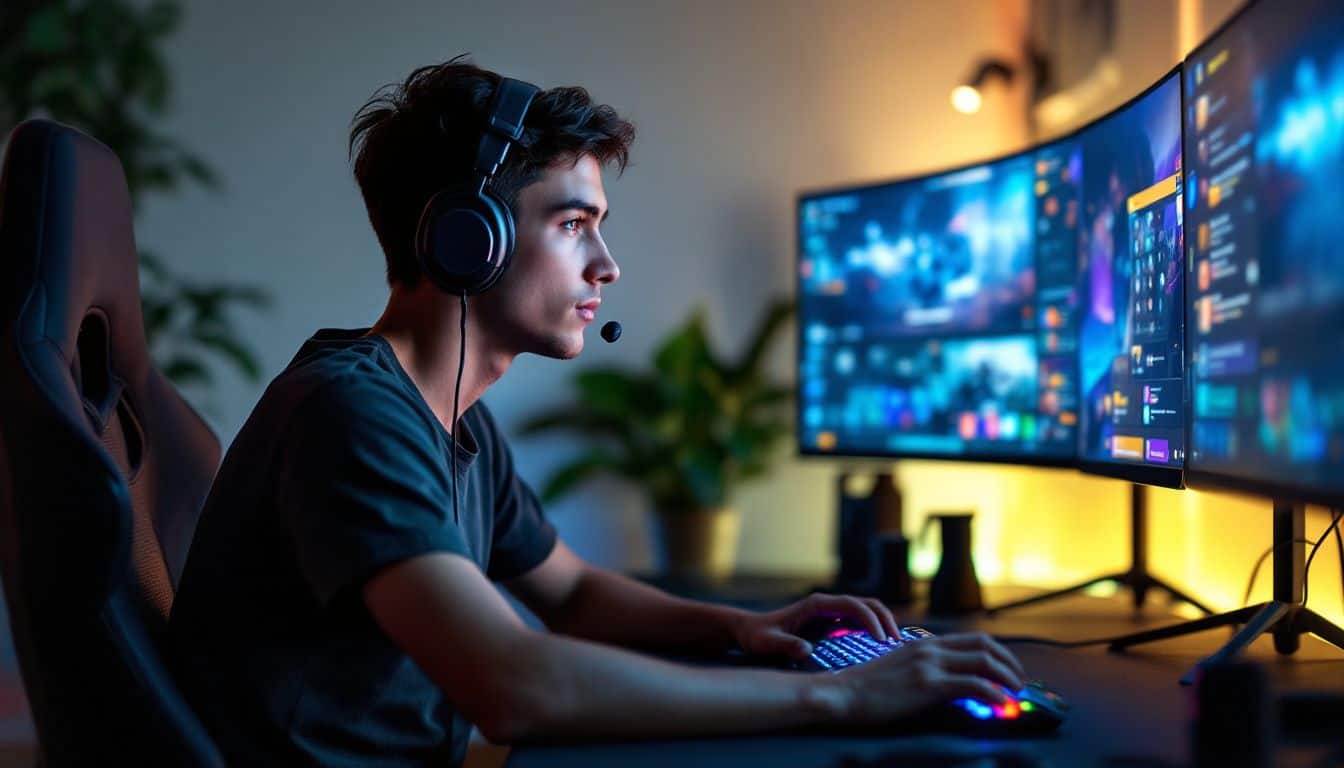Many gamers dream of turning their hobby into a career but don’t know where to start. Professional gaming has grown into a massive $1 billion industry, with players earning millions through competitions and streaming.
What is professional gaming? It’s a career path where skilled players compete in video game tournaments, create content, and build their personal brands. Ready to discover the secrets of this booming digital sport?
Key Takeaways
Pro gaming has grown into a $1 billion industry where players compete in organized leagues and tournaments, with most pros training 5.28 hours daily and retiring by age 26.
Top esports players earn money through multiple streams: tournament winnings, streaming on platforms like Twitch, sponsorship deals, coaching, and content creation, with events like The International offering prize pools up to $32 million.
Research shows pro gamers react 25% faster than casual players, but they face serious health risks like carpal tunnel syndrome, eye strain, and mental stress from 12-14 hour daily practice sessions.
The esports industry draws massive viewership with 532 million expected viewers by 2022, while 97% of teenage boys and 83% of teenage girls in America identify as gamers.
Professional gaming careers often start before age 15, requiring 8-10 hours of daily practice, with most players transitioning to coaching, broadcasting, or content creation roles after retiring in their mid-20s.
Table of Contents
Defining Professional Gaming
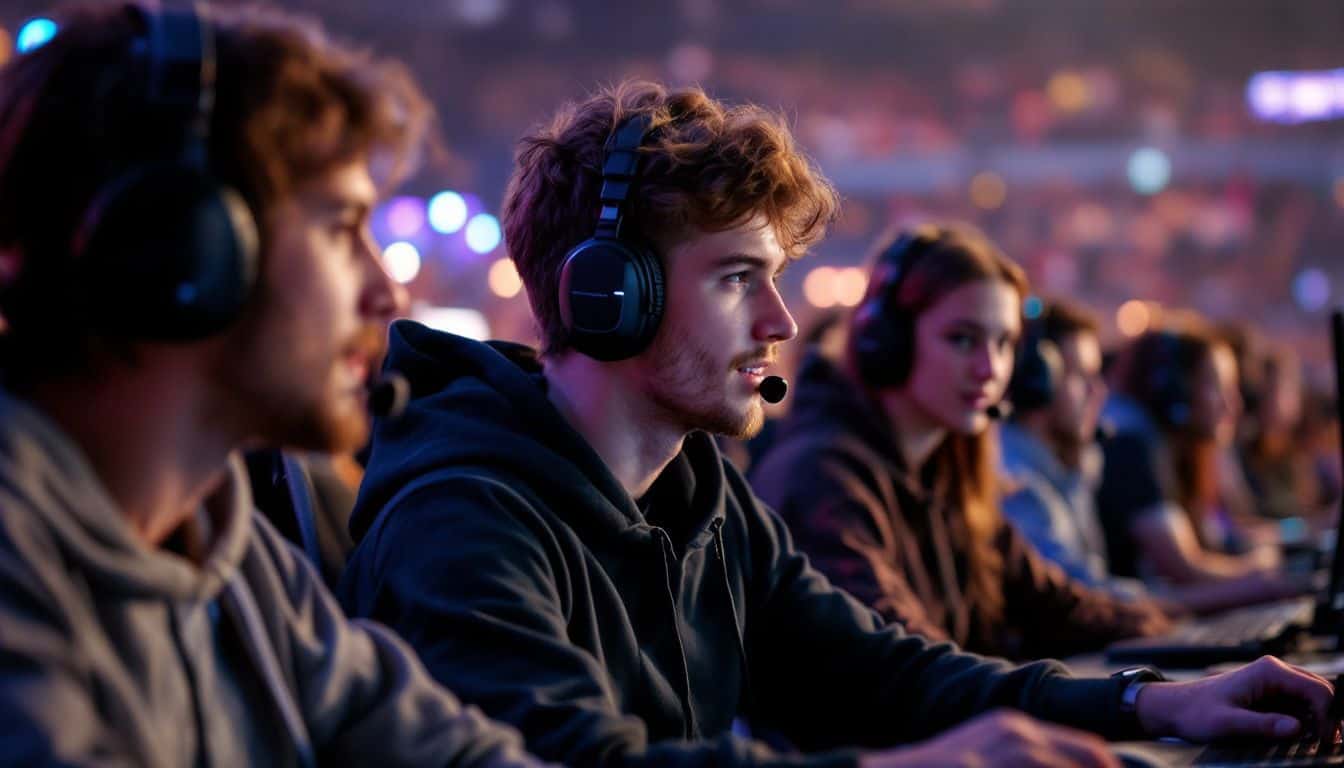
Professional gaming has grown from casual basement matches into a billion-dollar powerhouse with massive tournaments like ESL One and The International. Pro gamers compete in organized leagues and championships, much like traditional athletes do in the NFL or NBA, but they battle it out in games like League of Legends and Counter-Strike: Global Offensive instead of on physical fields.
Organized Competitive Gameplay
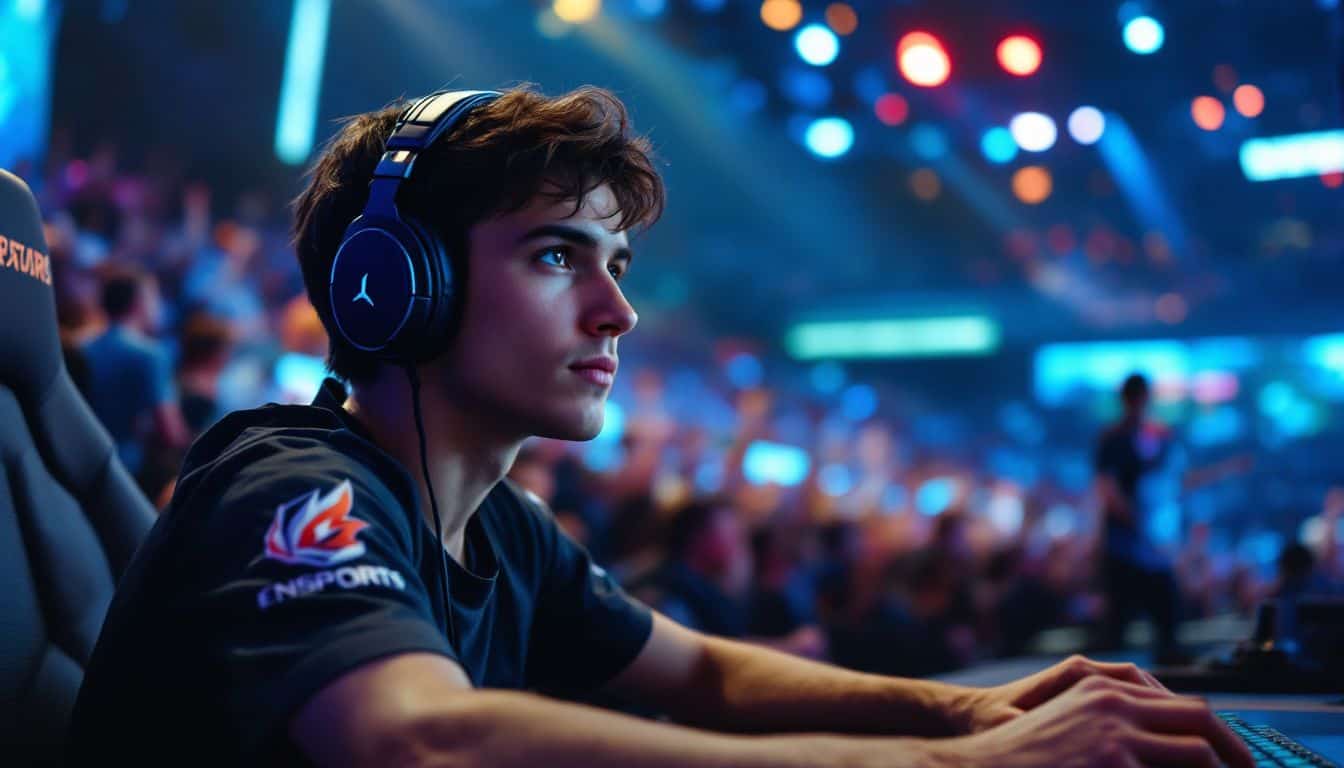
Competitive gaming has grown into a massive organized sport with clear rules and structures. Teams battle it out in games like League of Legends and Counter-Strike: Global Offensive for huge prize pools.
South Korea led the charge by making pro gaming an official sport in 2009, followed by other countries like China in 2003. Today’s esports scene features dedicated leagues, tournaments, and great sweepstakes casino options that mirror traditional sports.
Esports isn’t just playing games – it’s the next evolution of competitive entertainment. – Steve Bornstein, former ESPN president
The Olympic movement has started to embrace esports through events like Olympic Virtual Series and Olympic Esports Week. Major tournaments like Evolution Championship Series (EVO) draw millions of viewers worldwide.
Big names like Team Liquid compete in packed arenas while fans watch live streams on platforms like MLG.tv and Twitch. The scene keeps growing bigger each year, with more sponsors and bigger prize pools jumping in.
The Role of Advertisers and Sponsors
Pro gaming thrives on money from big brands and sponsors. Major companies like Red Bull pour millions into esports events and gaming hubs worldwide. These sponsors create special tournaments like Red Bull Kumite and Red Bull Home Ground to grab attention from gaming fans.
Advertisers love esports because it reaches young viewers who skip regular TV ads. Big brands pay top dollar for ad spots during live streams and tournaments. Gaming stars earn extra cash by showing sponsor logos on their jerseys or mentioning products during streams.
Ad revenue from platforms like YouTube Gaming and Twitch helps pro gamers make a living. Sponsorship deals often include free gaming gear, travel expenses, and training facilities.
Red Bull’s gaming hubs in Toronto, Montenegro, and Ireland show how sponsors build physical spaces for pros to practice and compete.
Esports vs. Traditional Sports
Traditional sports and esports share more similarities than most people think. Both require intense dedication, with gamers training 5.28 hours daily – comparable to many traditional athletes.
| Aspect | Traditional Sports | Esports |
|---|---|---|
| Physical Demands | High impact, full-body movement | Fine motor skills, hand-eye coordination |
| Training Hours | 4-6 hours daily | 5.28 hours daily average |
| Career Span | 10-15 years | 5-8 years (retirement age: 26) |
| Team Structure | Fixed positions, substitutes | Flexible roles, specialist players |
| Viewing Experience | Stadium-based, TV broadcasts | Online streams, virtual arenas |
| Practice Format | Physical drills, scrimmages | Scrims, VOD reviews, mechanics training |
| Injury Types | Muscle strains, joint injuries | RSI, carpal tunnel, eye strain |
| Global Reach | Region-specific leagues | Borderless competition |
| Revenue Sources | Tickets, merchandise, TV rights | Streaming, digital items, sponsorships |
| Practice Space | Fields, courts, facilities | Gaming houses, home setups |
Characteristics of Professional Gamers

Pro gamers spend up to 12 hours daily mastering their craft through intense practice sessions and team scrims. These digital athletes need lightning-fast reflexes, split-second decision making, and rock-solid mental focus to compete at the highest levels of esports tournaments.
Skills and Expertise
Elite gamers pack serious brain power and lightning-fast reflexes. Studies show these digital athletes crush normal reaction times by up to 25% faster than casual players. The left and right hands of top players move in perfect sync, like a pianist hitting complex chords.
Their quick thinking and sharp focus let them spot tiny details most people miss.
Gaming isn’t just about quick fingers – it’s about training your brain to process information at superhuman speeds.
These gaming pros need a mix of skills to compete at the highest level. They must master complex game mechanics, develop split-second decision making, and keep cool under intense pressure.
Recent research by Sousa and colleagues reveals pro players react faster but sometimes struggle with impulse control. Physical fitness plays a huge role too – many teams now require daily exercise to keep their players sharp and focused during long practice sessions.
Training and Practice Regimens
Pro gaming demands intense dedication and strict training schedules. Top players push their limits through structured practice sessions that blend gaming skills with physical fitness.
- Daily training spans 12-14 hours, mixing active gameplay with team meetings and fan events
- Physical workouts take up 1.08 hours per day, focusing on wrist exercises and back strength to prevent gaming injuries
- Morning sessions start with aim training in shooting games or micro-management drills in strategy games
- Teams review game footage together, just like NFL players study past matches
- Pro gamers practice specific moves or strategies 100+ times until they become muscle memory
- Reaction time drills help players nail perfect timing, like the famous Daigo Parry in Street Fighter
- Players use specialized gaming equipment to track their performance metrics
- Sleep schedules match tournament times, often requiring gamers to adjust their body clocks
- Mental coaching sessions help handle stress during big matches
- Teams run mock tournaments to simulate high-pressure situations
- Pro players maintain detailed logs of practice results and areas for improvement
- Regular breaks every hour prevent burnout and keep focus sharp during long training days
- Cross-training in different games builds overall gaming skills and adaptability
- Team scrimmages against rival squads test new strategies in real match conditions
Team Dynamics and Collaboration
Beyond daily practice sessions, successful esports teams thrive on strong bonds. Players must sync their moves like a well-oiled machine. Research by Macedo & Falcao shows that stable teams win more matches than temporary groups.
This makes perfect sense in high-stakes games like Dota 2 or Overwatch League matches.
Teams need clear roles and open chat lines to win big tournaments. Each player brings special skills to the table. Top esports clubs spend lots of time building trust through team exercises.
They practice together, eat together, and often live in gaming houses. This setup helps them read each other’s minds during intense matches. Virtual team training also lets players work on strategies across different time zones.
The best teams mix solo practice with group drills to stay sharp.
The Socio-Cultural Appeal of Professional Gaming
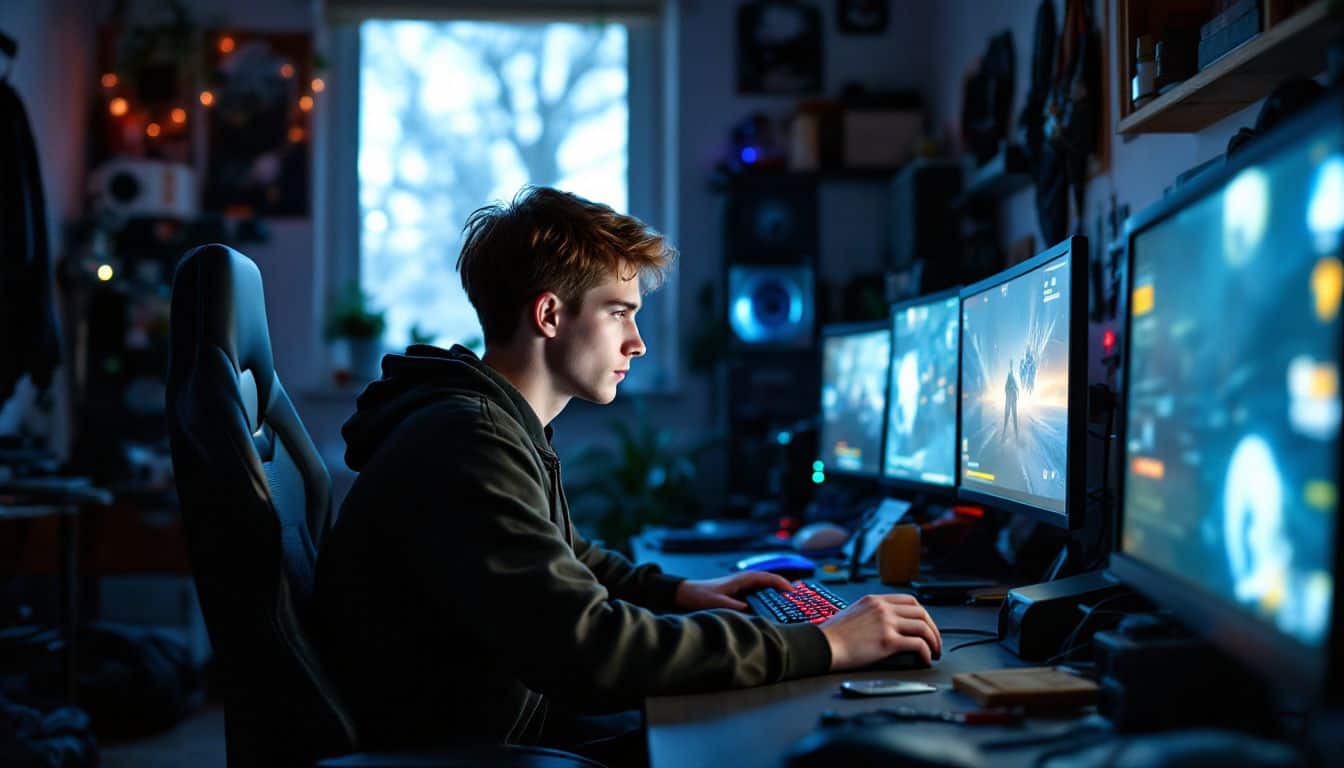
Pro gaming has exploded into a global phenomenon, with millions of fans tuning in to watch their favorite players battle it out in virtual arenas – want to learn what makes this digital sport so magnetic? Keep reading!
Popularity Among Younger Audiences
Young gamers dominate the esports scene in massive numbers. Pew Research reveals a striking fact: 97% of teenage boys and 83% of teenage girls in America call themselves gamers. These stats show how deeply gaming has grabbed the attention of Gen Z and younger millennials.
Social media platforms and streaming services like Twitch make gaming more accessible to youth than ever before.
The rise of mobile gaming has pushed these numbers even higher during COVID-19. Kids and teens spend countless hours watching their favorite streamers like Ninja while picking up gaming tricks.
Many young fans dream of going pro, seeing esports as a real career path just like traditional sports. This shift marks a huge change from past generations who viewed gaming as just a hobby.
Global Fanbase and Spectatorship
Esports fans pack massive arenas worldwide to watch their favorite players battle it out. Live streaming platforms beam these matches to millions of viewers at home. The International tournament, a prime example, drew countless eyes with its jaw-dropping $32 million prize pool.
Fans connect through chat rooms, social media, and local viewing parties to share their excitement.
Professional gaming has exploded into a global phenomenon with over 532 million viewers expected by 2022. These numbers rival traditional sports broadcasts. Dedicated fans follow their teams across multiple platforms, from Twitch streams to YouTube highlights.
Many stay up late to catch matches from different time zones. The rise of mobile viewing has made it easier for fans to watch their favorite players anywhere, anytime. Physical venues now feature special gaming sections where fans gather to cheer together, creating electric atmospheres similar to traditional sports bars.
Representation in Media and Pop Culture
The massive global fanbase has pushed pro gaming into mainstream media spotlight. Popular TV shows now feature gaming storylines, while Netflix and Amazon Prime stream gaming documentaries.
Major news outlets like ESPN3 cover esports championships with the same production value as traditional sports telecasts.
Gaming has become the new social currency of pop culture – Bobby Kotick
Pro gaming stars appear in commercials, talk shows, and social media campaigns. League of Legends pro Faker’s houseplant meditation habits make headlines just like traditional athletes’ routines.
Female gamers now make up 34% of esports fans, changing old stereotypes about gaming culture. Movies and TV shows portray gamers as smart, skilled competitors instead of basement dwellers.
This shift helps break down digital divides and creates more inclusive gaming spaces.
Career Pathways in Professional Gaming
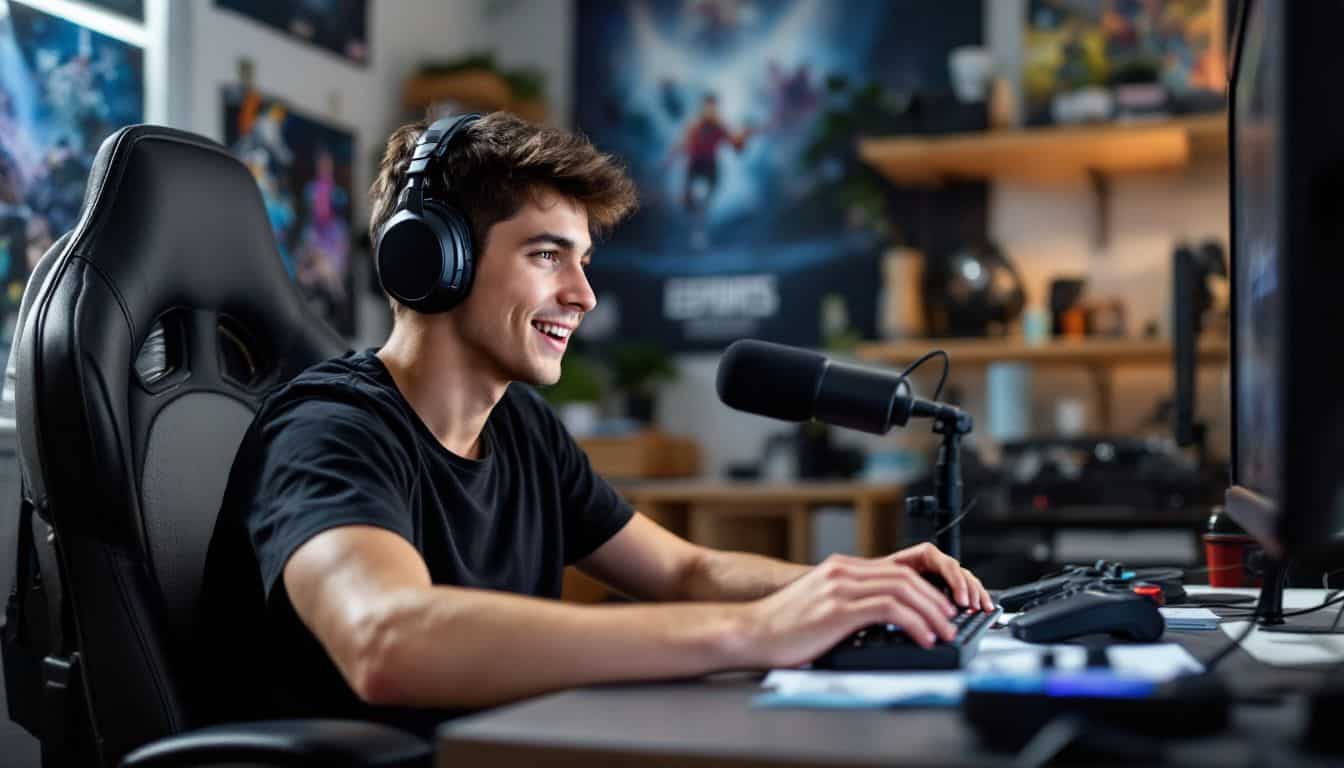
Pro gaming opens doors to many exciting jobs beyond just playing games. Top players can earn big money through tournaments, streaming, coaching, and creating content for platforms like YouTube and Twitch.
Becoming a Professional Gamer
Professional gaming offers a path to fame and fortune in the digital age. Players like Adel ‘Big Bird’ Anouche and Liam ‘Jukeyz’ Lunt prove that skill and dedication can lead to success in esports.
- Start gaming early and pick one game to master. Most pro gamers begin their journey before age 15.
- Practice at least 8-10 hours daily. Top players spend more time gaming than most people spend at regular jobs.
- Join online tournaments through platforms like Battle.net or Major League Gaming. Small victories build your reputation.
- Stream your gameplay on platforms like Twitch. Successful streamers can earn money while building a fanbase.
- Study pro matches and learn advanced strategies. Watch replays of tournaments like Red Bull Kumite.
- Build your physical stamina through regular exercise. Gaming requires quick reflexes and endurance.
- Network with other players in gaming communities. Many pros get noticed through word-of-mouth.
- Enter local gaming events and competitions. Face-to-face matches test your skills under pressure.
- Learn to manage gaming-related stress. Mental health matters as much as gaming skill.
- Create social media accounts to showcase your achievements. Sponsors look for players with strong online presence.
- Join an amateur team to gain competitive experience. Team play differs from solo gaming.
- Track your progress with performance metrics. Record win rates, reaction times, and tournament results.
The next step involves understanding the various opportunities beyond playing, including coaching and content creation.
Opportunities Beyond Playing (Coaching, Content Creation)
Pro gaming offers many paths beyond just playing games. Smart gamers build careers that last long after their competitive days end.
- Game coaching pays well for ex-pros who teach new players. Top coaches earn $50-200 per hour helping others master games like Overwatch and Street Fighter II.
- Content creation through livestreaming brings steady income. Successful streamers like Dan “Artosis” Stemkoski and Nick “Tasteless” Plott built huge followings after their playing careers.
- Team management roles let former players run esports organizations. Many handle player recruitment, training schedules, and business deals.
- Esports broadcasting needs skilled commentators who understand competitive gaming. Former pros often become popular analysts and shoutcasters at major tournaments.
- Video production for gaming channels creates steady work. Players use their expertise to make tutorials, gameplay breakdowns, and entertainment content.
- Brand partnerships open doors for sponsored content. Gaming companies hire ex-pros to promote new games and equipment.
- Tournament organizing needs people who know competitive gaming inside out. Former players help run events like EVO and Olympic Esports Games.
- Game testing jobs value competitive gaming experience. Companies need skilled players to find bugs and balance issues.
- Mental coaching helps new pros handle tournament pressure. Ex-players understand gaming stress and teach others to cope.
- Gaming education creates teaching opportunities. Schools and training camps hire former pros to run gaming programs.
- Strategy consulting lets pros work with game developers. Companies value input from players who mastered their games.
Transitioning Careers After Gaming
Pro gamers often move into coaching or content creation after their competitive days end. Many ex-players start YouTube channels or Twitch streams to share their gaming knowledge. The smart ones build their personal brands while still competing.
This creates a smooth path to roles like esports commentators, team managers, or gaming consultants.
Career shifts need careful planning due to the short lifespan of competitive gaming. Most pro gamers retire in their mid-20s, making backup plans vital. Some pros take online courses during their gaming careers.
Others network with industry contacts to find jobs in game development, marketing, or event management. Physical health issues and burnout push many players to explore these alternatives early.
The intense focus on winning can leave gaps in education and work experience that need filling.
Socio-Psychological Aspects of Pro Gamers’ Lives

Pro gamers face intense mental pressure that can rival Olympic athletes. They must balance 12-hour practice sessions with streaming commitments, team meetings, and personal life.
Managing Stress and Pressure
Life as a competitive gamer brings massive mental strain. Studies by Maldonado-Murciano in 2022 show pro-gamers face higher stress levels than casual players. The constant pressure to perform, long practice hours, and public scrutiny takes a heavy toll.
Many players deal with sleep issues, anxiety, and gaming disorders while trying to stay at peak performance.
Mental health support has become vital in esports teams today. Top organizations now hire sports psychologists and wellness coaches for their players. Teams set up regular meditation sessions, stress-management workshops, and mental health check-ins.
Players learn breathing exercises and mindfulness tricks to stay calm during high-stakes matches. Taking breaks between practice sessions helps prevent burnout and keeps the mind fresh for competition.
Work-Life Balance Challenges
Stress management leads straight into the tough balancing act pro gamers face daily. Pro gamers spend 12-14 hours practicing each day, leaving little room for personal life. Their packed schedules include team practice, solo training, streaming sessions, and sponsor obligations.
Many miss important family events or struggle to maintain friendships outside gaming circles.
The pressure to stay competitive creates a brutal cycle. Most pro gamers skip regular meals and proper sleep to squeeze in more practice time. Physical health often takes a back seat to gaming goals.
The short career spans in esports make players push themselves harder, leading to quick burnout. Some pro gamers report feeling isolated and disconnected from normal social activities.
Teams now hire wellness coaches to help players create better daily routines. These coaches focus on teaching time management skills and setting healthy boundaries between work and rest periods.
Community and Peer Support
Pro gamers build strong bonds through shared experiences and daily battles. Many players lean on teammates for emotional backup during tough matches and high-pressure tournaments. Discord servers and gaming forums create safe spaces where pros talk openly about mental health struggles.
These digital hangouts help fight the loneliness that comes with long practice hours.
Gaming teams now offer more support systems to help players cope with stress. Team houses often include mental health pros and life coaches on staff. Players meet regularly to discuss personal challenges and work-life balance issues.
The esports community pushes for better mental health resources, though many organizations still lack structured support programs. Online gaming groups step in to fill this gap, offering peer counseling and advice through platforms like Twitch and Reddit.
Health and Physiology in Professional Gaming

Pro gamers face serious health risks from long gaming hours, including carpal tunnel syndrome and eye strain, but you’ll be amazed to learn how top players stay fit and sharp – keep reading to discover their secrets!
Physical Strain and Injuries
Pro gaming takes a serious toll on players’ bodies. Many esports athletes face neck and back pain from sitting for long hours. A recent study by Lam and team (2022) shows poor posture causes most of these problems.
Physical strain hits hardest during intense gaming sessions, where players barely move from their spots.
Gaming equipment plays a big role in preventing injuries. Top players pick their gear with great care. They prefer lighter gaming mice to reduce wrist strain. Studies show pros choose 80-gram mice over 87-gram ones for better control and less fatigue.
Smart ergonomic choices help players stay healthy in this fast-growing sport. Mental health challenges often follow these physical problems, making proper care crucial for success.
Mental Health Considerations
Pro gamers face tough mental battles every day. Studies show they deal with more stress than casual players do. The pressure to win, long practice hours, and public scrutiny can lead to anxiety and depression.
Many players struggle with sleep patterns and feel burned out from the constant grind. Mental illness affects their performance and personal lives in big ways.
Top players need strong mental support systems to stay healthy. Teams now hire sports psychologists to help their players cope with stress. Players learn meditation and relaxation methods to keep calm during matches.
Regular breaks from screens, physical activity, and good sleep habits make a huge difference. The gaming industry has started taking mental health more seriously, creating better support networks for its athletes.
Smart teams focus on both gaming skills and mental wellness to keep their players at their best.
Importance of Fitness and Well-being
Physical fitness plays a huge role in esports success. Recent studies show 93% of top gamers stay active through regular exercise. These players know that better body shape leads to stronger gaming performance.
Many esports teams now include gym time and workout schedules as part of their daily training.
Healthy habits create better gamers. A fit body helps players stay alert during long matches and tournaments. Regular exercise fights sedentary behavior risks that come from sitting at gaming stations.
Smart players mix physical training with their screen time to boost their gaming skills. The next section explores how money flows through the professional gaming world.
The Economics of Professional Gaming
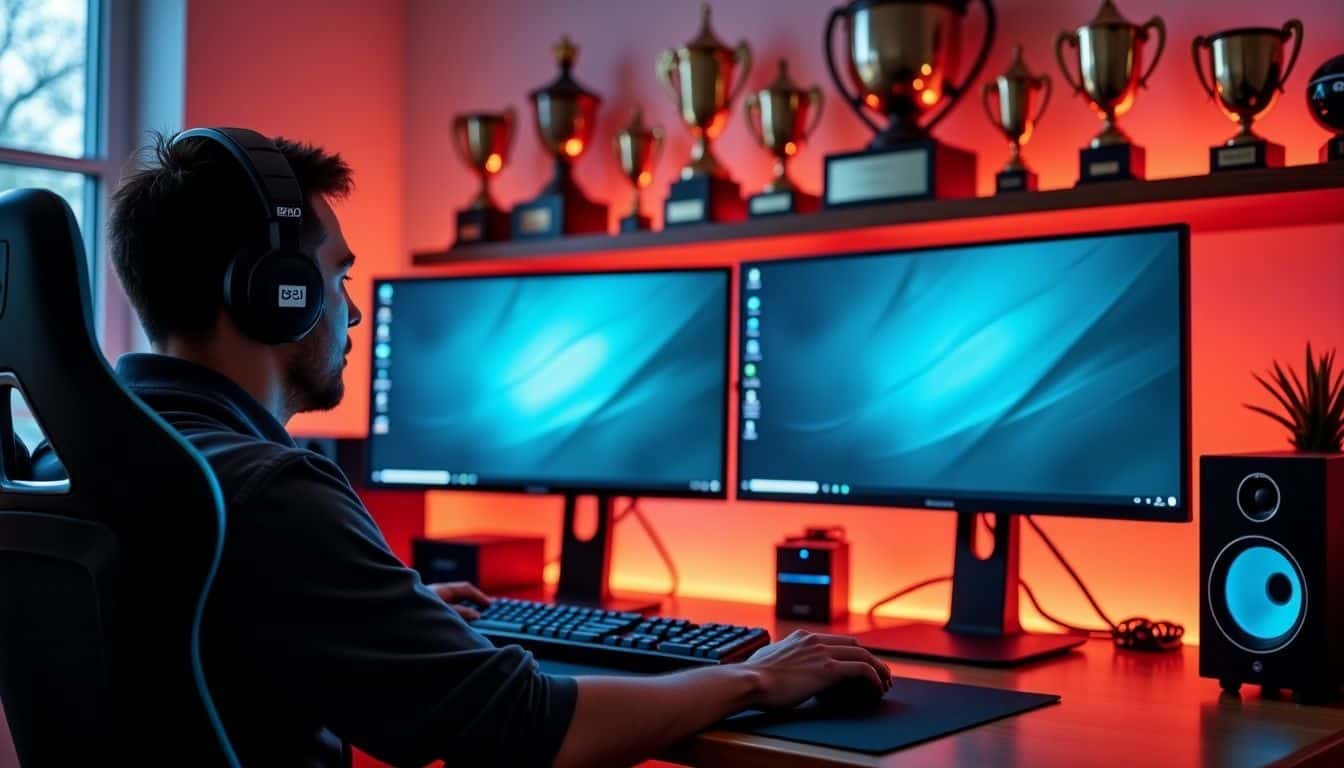
Pro gamers rake in serious cash through massive tournament prizes and streaming deals. Top players like Ninja have earned millions from Twitch streams, sponsorships, and competition wins.
Earnings and Prize Pools
Prize money in esports has skyrocketed to jaw-dropping levels. The International tournament showcases this growth with its massive $32.1 million prize pool. Top players earn millions through tournament winnings, making competitive gaming a serious career path.
Teams compete in packed arenas for life-changing amounts of cash, similar to traditional sports championships.
Money flows into esports from many sources. The industry pulled in $1.3 billion in 2022 through advertising revenue, sponsorships, and media rights. Major brands like Valve pump serious cash into tournament prizes.
Players also boost their income through streaming on platforms like Twitch and YouTube. Sponsorship deals and endorsements add another layer to a pro gamer’s earning potential. Let’s explore how these gamers secure sponsorship deals to maximize their income.
Sponsorships and Endorsements
Beyond basic earnings, pro gamers rake in big money through brand deals. Top esports athletes score sponsorships from gaming giants and mainstream companies alike. Red Bull leads the pack with massive investments in gaming hubs across Toronto, Montenegro, and Ireland.
These partnerships often include gear, travel expenses, and monthly stipends.
Pro gamers boost their income through streaming deals and product endorsements. Many players showcase gaming chairs, keyboards, and energy drinks to their fans. The biggest names land contracts with sports brands like Nike and Adidas.
Red Bull’s gaming events – Kumite, Home Ground, and Campus Clutch – give sponsored players extra spotlight time. Smart players build their personal brands through social media and YouTube channels.
This creates more chances for paid promotions and long-term brand partnerships.
Revenue Streams from Streaming and Content Creation
Pro gamers boost their sponsorship earnings through live streaming and content creation. Top players stream their practice sessions on platforms like Twitch and YouTube Gaming. They share gameplay tips, interact with fans, and collect donations from viewers.
Many pros also run successful YouTube channels with gaming tutorials, vlogs, and highlight reels.
Content creation opens up multiple money streams for esports athletes. They earn from subscriber fees, channel memberships, and Super Chat donations during streams. YouTube’s $53 million deal with Activision Blizzard shows the huge value of gaming content.
Smart pros build personal brands through social media presence and regular content uploads. This helps them stay profitable even after their competitive careers end.
Legal and Organizational Factors

Pro gamers need solid contracts to protect their rights in esports. Legal teams work hard to set up fair deals between players, teams, and sponsors.
Contracts and Agreements
Pro gaming deals pack a punch with complex legal papers. Players must sign contracts that spell out their pay, practice hours, and streaming rules. These deals often lack standard terms across teams and regions, making them tricky to handle.
Many esports athletes face shaky job security due to informal agreements that don’t protect their rights.
Legal papers in esports cover more than just player deals. Game makers need solid contracts for publishing rights, talent deals, and vendor services. Teams must lock down sponsorship terms and broadcasting rights.
The lack of clear industry rules means players should read the fine print before signing anything. Smart gamers hire lawyers to check their contracts and protect their interests in this fast-growing field.
Player Rights and Representation
Professional gamers need strong legal protection in today’s billion-dollar esports industry. Independent developers shape how players get treated, but many athletes still lack basic rights.
Players often face unfair contracts, missing health benefits, and zero job security. The Korean e-Sports Association leads the way by setting clear rules for player treatment and fair pay.
Yet, most regions still need better systems to protect their cyber-athletes.
Legal experts now push for standard player contracts across major esports leagues. These contracts must cover health insurance, retirement plans, and clear working hours. Teams like Vaevictis Esports broke new ground by fighting for equal treatment of female players in competitive gaming.
More players join unions to demand better working conditions and fair revenue sharing. The rise of organized esports competitions brings fresh challenges for regional regulations and industry standards.
Regional Regulations and Industry Standards
Player rights link directly to the rules each region sets for esports. Different countries have strict laws about video games and esports. China leads with some of the toughest rules in the gaming world.
They limit how long people can play and what content games can show. Game makers must follow special music licensing rules too. These rules affect how games look and sound in different places.
The gaming industry needs clear standards to grow. Big companies like Blizzard follow strict rules about fair play and content. They work with local governments to meet each area’s laws.
Teams must stick to these rules or face penalties. The Global Association of International Sports Federations helps set these standards. They make sure esports stays fair across borders.
This matters a lot for international tournaments and player contracts.
The Role of Technology in Professional Gaming
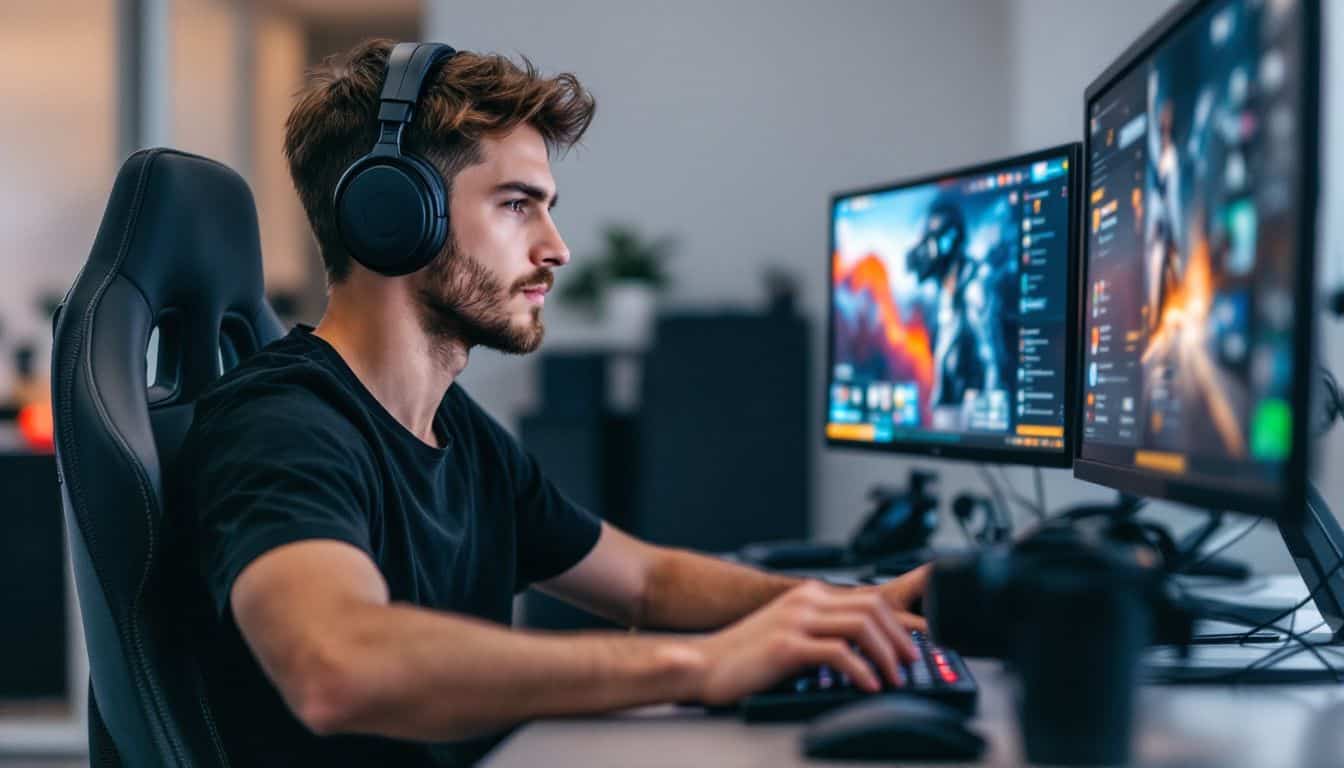
Pro gamers rely on cutting-edge gear like specialized keyboards, high-refresh monitors, and VR headsets to stay ahead in esports – want to learn what other tech secrets give them the winning edge?
Gaming Equipment and Hardware
Pro esports players pick their gear with laser focus on speed and comfort. Top players favor lighter gaming mice around 80 grams, which lets them move faster during matches. Every piece of hardware counts in competitive play, from mechanical keyboards to high-refresh monitors that display smoother motion.
Gaming equipment plays a huge role in player performance. Research shows elite players have better hand coordination and quicker reaction times with the right tools. They need precise hardware to spot enemies faster and react in split seconds.
Most pros stick to wired gear to cut any delay between their moves and what happens on screen. Their setups often include special chairs and desks built for long practice sessions.
Role of Virtual Reality (VR) and Augmented Reality (AR)
Virtual Reality and Augmented Reality have changed how pro gamers train and compete. VR headsets let players step inside their favorite games for total immersion. Players now practice in virtual environments that feel just like real tournaments.
AR adds digital elements to the real world, helping gamers spot enemies faster and track game stats in real-time. These tools make training more effective and fun.
Gaming companies keep pushing VR and AR forward with better graphics and smoother controls. Pro teams use VR to run practice matches without leaving their training facilities. AR glasses show vital game info right in front of players’ eyes.
This tech helps gamers build muscle memory and improve their reaction times. The latest VR systems even track eye movements and body positions to make games feel more natural. These advances create new ways for fans to watch matches too, putting them right in the middle of the action.
Advancements in Gaming Software
Beyond VR and AR tech, gaming software keeps pushing boundaries in amazing ways. Modern games pack advanced physics engines, life-like graphics, and smart AI that learns from player moves.
Game developers now use tools that let them create massive open worlds with zero loading screens. The latest gaming engines support ray tracing for ultra-realistic lighting and shadows.
Tech giants pour millions into making games run smoother and look better. Cloud gaming services stream high-end games to basic devices. Game companies use machine learning to spot cheaters and create fair matches.
These software upgrades help pro gamers practice better and compete at higher levels. New analytics tools track player stats and help teams improve their strategies during tournaments.
Challenges in Professional Gaming

Pro gamers face intense mental strain from 12-hour practice sessions and constant public scrutiny. Money flows into esports like never before, but players still battle unstable contracts and career uncertainty.
Competition and Burnout
Competition in esports pushes players to their limits daily. Top gamers spend 12-14 hours practicing, analyzing strategies, and competing in matches. The mental strain takes a huge toll.
Many players face burnout from the endless grind of tournaments, streaming duties, and team practices. Physical fatigue hits hard too – stiff necks, eye strain, and lower back pain become constant companions.
The pressure to stay on top never stops in competitive video gaming. Players must deal with tight schedules, travel stress, and high expectations from fans and sponsors. Mental health issues pop up often due to performance anxiety and social media criticism.
Teams now bring in sports psychologists and wellness coaches to help players cope better. Still, the fast-paced nature of esports makes burnout a big challenge for even the most skilled competitors.
Ethical Issues in Gaming (Cheating, Match-Fixing)
Cheating and match-fixing plague professional gaming like a nasty virus. Pro players use special software to gain unfair advantages in matches. Some sneaky gamers exploit game bugs or use automated scripts to boost their performance.
I’ve seen firsthand how these cheats can ruin tournaments and destroy player trust. Match-fixing hits even harder, with players deliberately losing games for betting profits. This shady practice threatens the integrity of esports competitions and hurts honest players.
The gaming industry fights back hard against these problems. Tournament organizers now use anti-cheat software and strict monitoring systems. Many esports leagues require players to compete in controlled environments.
Teams face heavy fines and lifetime bans if caught cheating. The rise of sports betting has made match-fixing more tempting than ever. Pro gamers must choose between quick money and their reputation.
Big names like Billy Mitchell lost everything after cheating scandals exposed their tricks. Clean competition matters more than ever in our billion-dollar esports world.
Industry Stability and Job Security
Pro gaming careers face major stability issues. Game popularity shifts fast, making long-term jobs shaky for players and teams. Many esports organizations struggle with money problems because popular games today might lose their appeal tomorrow.
This creates a tough spot for cyberathletes who need steady income to support themselves.
Job security in competitive gaming remains a big concern. Players often jump between teams as sponsorship deals change or game meta shifts. The misaligned incentives between teams, players, and third parties make stable careers hard to maintain.
Most pro gamers need backup plans, like streaming or content creation, to stay afloat in this fast-paced industry. The next big challenge facing pro gamers involves dealing with ethical issues in gaming.
The Future of Professional Gaming
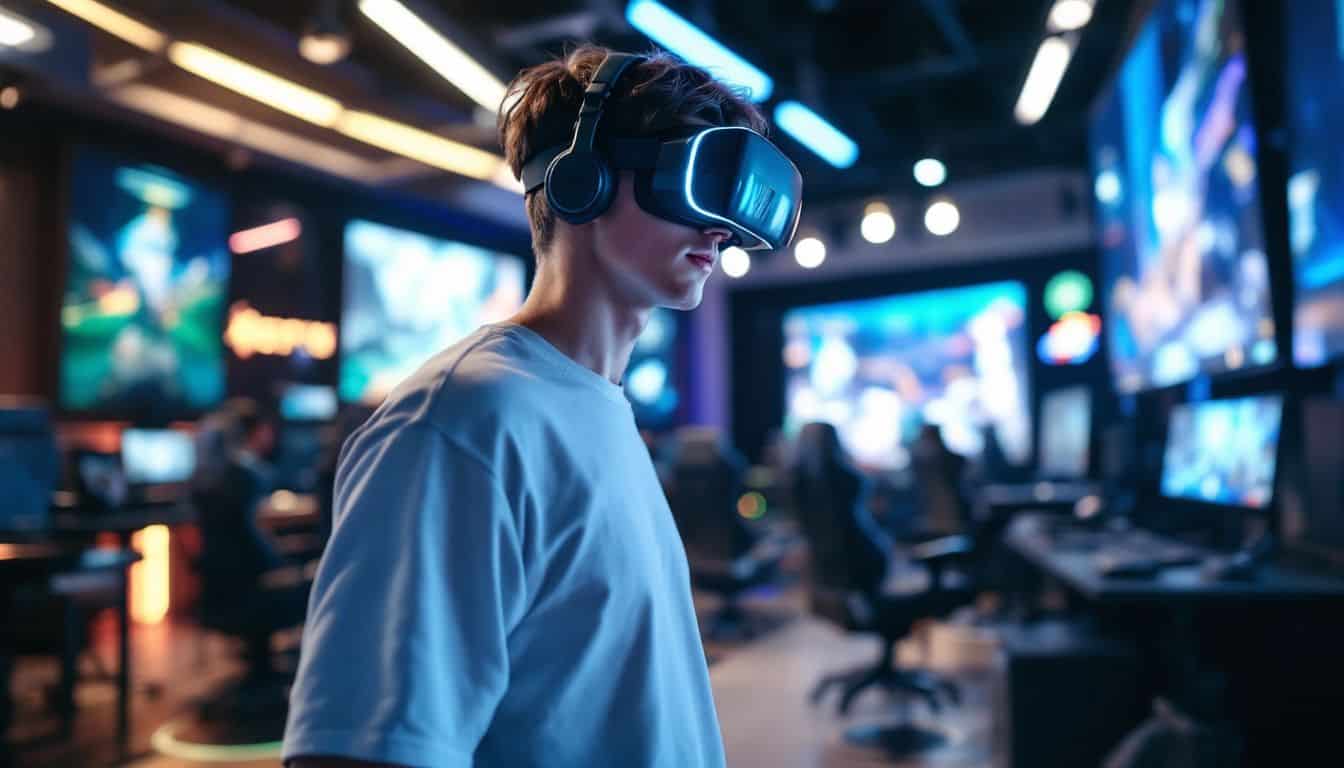
Professional gaming will explode into a $5 billion industry by 2025, with VR gaming leagues leading the charge. Major tech companies pump millions into gaming tech and virtual arenas, creating jobs we haven’t even dreamed of yet.
Growth of Esports Leagues and Tournaments
Esports leagues keep getting bigger and better. Major tournaments now fill huge stadiums with screaming fans, just like Olympic Games events. The industry has grown so much that it’s worth over $175 billion, beating many old-school entertainment sectors.
Big events now come in different sizes – from small local matches to massive “Giga” tournaments that draw millions of viewers online.
Top gaming companies run these mega-events with prize pools that make players’ eyes pop. Blizzard’s tournaments pack arenas full of fans who love watching teams battle it out in games like Overwatch.
The rise of electronic sports has caught the attention of traditional sports bigwigs too. Thomas Bach, the Olympics chief, has started talking about adding video game competitions to future Olympic events.
This shows how far competitive gaming has come from its arcade video game roots.
Emerging Technologies and Their Impact
Virtual Reality and Augmented Reality stand at the forefront of gaming’s next big leap. Pro gamers now train in VR environments that copy real tournament settings down to the smallest detail.
These tech advances create deeper levels of player immersion through motion controls and 3D spatial awareness. I tested several VR headsets at gaming conventions, and the difference between today’s systems versus five years ago feels massive.
The haptic feedback and precise tracking make competitive gaming feel more physical than ever.
Gaming tech keeps pushing forward at breakneck speed. Cloud gaming services let pros practice from anywhere with minimal lag. Motion capture helps teams study player movements to prevent injuries.
Smart AI systems analyze gameplay patterns to help coaches develop better strategies. The mix of competitive video games with cutting-edge tech opens new paths for how pros train and compete.
Many top teams already use data analytics and biometric tracking to boost player performance. This tech revolution shapes how the next generation of gaming stars will rise.
Professional Gaming in the Metaverse
Tech advances in esports lead straight into the next big thing: gaming in the metaverse. Pro gamers now jump into full 3D spaces where they compete in digital arenas. These spaces feel real, thanks to VR headsets and motion controls.
I’ve tested these systems myself, and they create a wild mix of physical movement and digital skill.
The metaverse brings fresh ways to play and watch esports. Fans can sit in virtual seats right next to the action, high-five other viewers, and chat face-to-face with their favorite pros.
Big names like Overwatch already host matches in these digital spaces. Teams practice in custom virtual training rooms that copy real tournament setups. The best part? You don’t need to travel across the world anymore – just plug in and play from anywhere.
People Also Ask
What makes someone a professional gamer?
A pro gamer plays video games for money in tournaments like Evo Moment 37. They need sharp visual search skills, quick reflexes, and good sleep quality. From Pong to Overwatch, gaming has grown into a real career path.
How much can pro gamers earn?
Pro gamers can earn big money through tournaments, like the famous Justin Wong matches. Since Murphy v. National Collegiate Athletic Association, sports gambling and bets have added more ways to make money in esports.
What skills do you need for cybersport success?
Top players need strong selective attention, cognitive flexibility, and physical fitness. Like Daigo Umehara showed with Ken Masters, fighting games demand both mental and physical strength. You can’t be too tired or have sedentary behaviors.
How has professional gaming changed since Space Invaders?
Gaming has evolved from Atari and Asteroids to modern esports. Twin Galaxies tracked scores back then. Now, we have Team Vaevictis and massive tournaments with digital literacy requirements.
Is pro gaming only for men?
No! While video game culture had masculinist roots, feminist gamers like Anita Sarkeesian helped change things. The field isn’t just heteronormative anymore – it welcomes all players with talent.
How do you start in professional gaming?
Begin with action games that match your skills. Study methodology from top players. Join tournaments to build perceptual skills. BAM Tech and other groups offer paths to go pro. Just remember, it’s pretty chaotic at first!
References
https://issuu.com/svengvp/docs/g_e_book_-_3_-_ebook
https://www.scrollofstrategy.com/p/incentives-of-esports
https://e-space.mmu.ac.uk/632122/1/FULLTHESISV48-6-23.pdf
https://www.nyc.gov/assets/mome/pdf/mome-nyc-digital-games-industry-study-report.pdf
https://www.linkedin.com/in/thomas-shiva-6aa759112
https://nj1015.com/innovation-center-opens-in-atlantic-city-nj-to-cash-in-on-1b-esports-industry/ (2022-10-31)
http://buildingmentalcapital.com/
https://www.sportslaw.org/conferences/2016conf/speakers/index.cfm
https://www.sponsorunited.com/category/endorsements
https://www.sheppardmullin.com/media/publication/1962_Esports%20Media%20Rights%20Whitepaper%200921.pdf (2021-10-19)
https://fastercapital.com/topics/trends-and-challenges-in-the-gaming-industry.html
https://www.arlington4th.com/light-news-55277912157
https://spectrum.library.concordia.ca/993823/1/Pedraca_PhD_S2024.pdf
